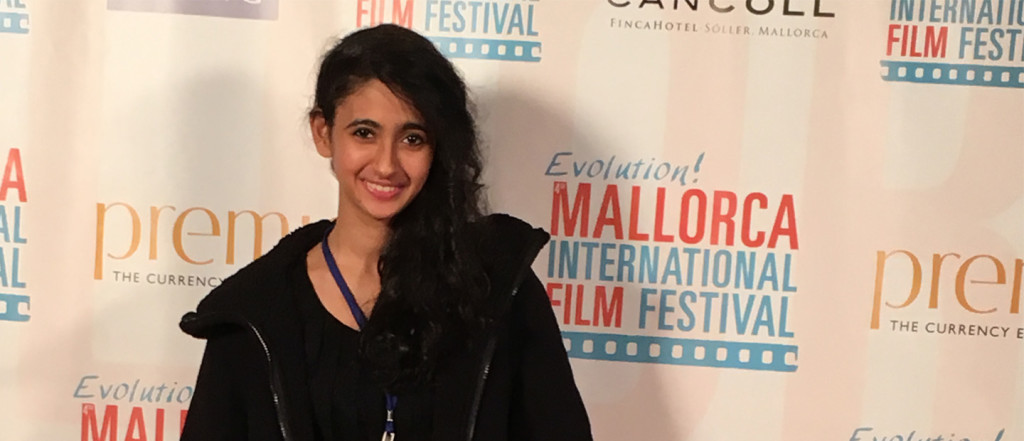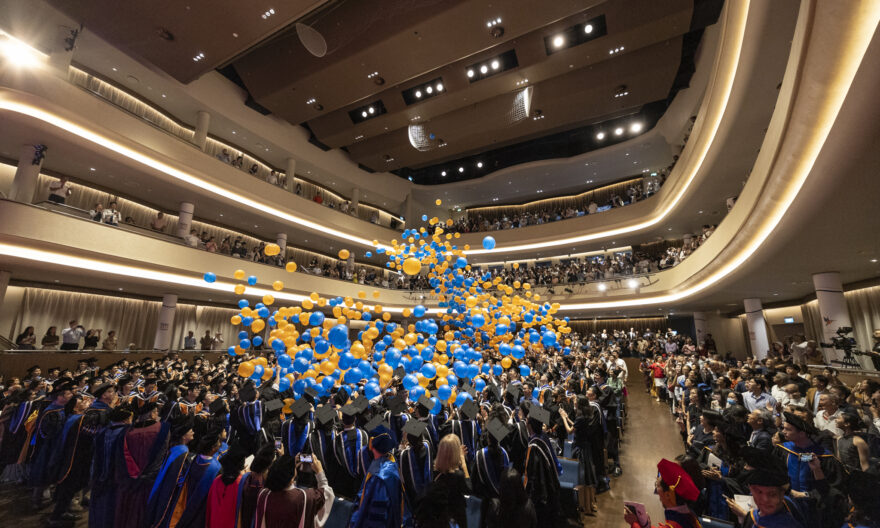Shanice Stanislaus’ documentary film Refugi captures universality of dance

Shanice Stanislaus’ (Class of 2017) passion for dance drove her to capture, or archive, movements in film.
In her documentary film Refugi, she explored how different people express themselves through the medium of dance. The film weaved together interviews and dance pieces of people with varied experiences in dance, to express the universality of the art form. After being featured at the Evolution! Mallorca International Film Festival in Spain late last year, Refugi was shortlisted for three film festivals worldwide. It is currently under consideration for several others.
At Evolution! Mallorca, Shanice screened her film and engaged in a talk session with the audience, where she discussed her documentation process of dance. “I was asked a lot of questions as I was the only Singaporean director,” she said.
Mallorca, an island off the eastern coast of Spain, is home to a thriving cinema scene. Since its inception in 2011, the film festival has expanded to attract a global array of filmmakers and producers.
Her independent endeavour began last summer when Shanice worked for the show Dance to Death in Barcelona, Spain.
She did not start out with the idea of creating a film. Her main purpose was ‘movement research’, which is an archival of different styles of movement without genres attached. “I hope this film will encourage more of such fieldwork and movement-based research in dance scholarship,” she said.
Shanice began her research through a series of interviews, which she also saw as an opportunity to better understand the dance scene in Spain.
Her first interviewee was her ‘host mother’ who was part of the company that had brought her to Barcelona. Although she wasnot formally trained, she shared Shanice’s passion for dance. She also talked to an ex-dancer from the Pina Bausch Company in Germany, her visit coordinator and the publicist for the dance space she worked at. After each interview, she would ask each person to translate what they had said about dance into movement.
“Everything you just said has to come from somewhere within that isn’t verbal,” Shanice would tell them. “Then, they would start dancing.”
The four people she talked to came from diverse backgrounds of dance expertise. They each brought different but valuable insights on what dance meant to them. For example, her ‘host mother’ spoke of the ageing body and whether it can hinder dance, while the ex-dancer talked about the harshness of the industry.
Through the dialogues, Shanice could compare the trained body to the untrained body, and see the differences in style. “I wanted to capture the universality of dance,” she said. “Although we do not speak the same native language, there was something connecting us.”
As she continued to document her work in between her hectic schedule of her day job at Dance to Death, Shanice collected many material. She eventually decided to ‘immortalise’ it the form of film.
She recalled attending a film festival in Singapore several years ago, where she met the director of the Thai film, Chiang Khan Story. The director advised her that she did not need a lot of good camera angles if she had a good story to tell.
She took the advice to heart and spent her remaining two months in Barcelona working on the film. “I’m not a very technical person,” said Shanice, who edited the video clips taken with her iPhone using only the prepackaged software iMovie on her MacBook Air. “But this film is my way of encouraging my audience that dance should not be restricted to a certain kind of body. It comes from somewhere within.”
The title Refugi means “refuge” in Catalan. As Shanice faced challenges living alone in a foreign country, she sought refuge in dance. The title, she said, embodies her wish to capture that feeling.
She finished the film with two days left in her stay in Barcelona. A premiere held in the dressing room of Dance to Death was met with much enthusiasm. Shanice was encouraged to submit her piece to film festivals for consideration.
After airing her own film at Mallorca, Shanice attended networking sessions and panels. She talked to personnel involved in the film industry, and met a lot of directors who made incredible feature films.
Shanice made her directorial debut with another film created with several classmates from Yale-NUS. Titled Duende, the film follows a Singaporean dancer as she shares her passion for the Spanish dance, flamenco.
Film is an avenue for expression of Shanice’s primary interest, which lies in the performing arts. As a graduating senior, she is now busy working on her capstone project which is a show that she writes, directs, choreographs and performs in. The project will incorporate film and elements of audience interaction. “The two films, Duende and Refugi, represent my inspirational journey that has culminated in this final performance,” said Shanice.





